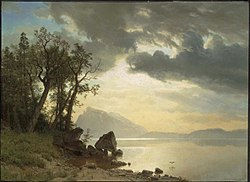Accident on the Cliff House Road
- Cheryl Anne Stapp

- Dec 1, 2021
- 3 min read

The press treated the accident as a sensation—and why not? All the elements were there: women of ill-repute, stampeding horses, and a dead former stage driver.
It was a nice day in San Francisco, that third day of February, 1868, when a young woman decided to take herself and three female friends for an outing over the Point Lobos and Ocean Beach roads. The young woman’s name was Grace Silva, which might have been an alias. A news reporter described her as “an inmate” of a house on Waverly Place, and that said it all about her and her friends—for Waverly Place was the neighborhood of the most elegant, lavishly appointed brothels in the entire city.
That afternoon Grace had sent for a carriage at Killip’s Stable, only to learn that the largest carriage available on short notice was a rockaway— a low, lightweight, four-wheeled vehicle having open sides beneath a fixed top—which seated two, or three at most. John Munson, a forty-nine-year-old retired stage driver from Victoria, worked at Killip’s where he cared for Mr. Killip’s harness-racing horse Flying Cloud, a frequent first-place winner, and chanced now and then on a job of driving for someone. That day he happened to have some free time.
As there were four in Grace Silva’s party and the rockaway couldn’t accommodate all of them, John offered to take Grace separately in a one-horse carriage, driving a less-celebrated harness-racer named Prince. This was agreed to, and the party started off, with the rockaway carriage leading and John Munson slowly following.
Out on the road, the rockaway got some distance ahead and turned in at one of the wayside houses, waiting for Munson to catch up. Not seeing that the other driver had stopped, John Munson drove past, continuing on alone until he reached the top of the hill above the Cliff House restaurant.
All of a sudden, his horse was startled by a team coming up from behind. And later, it was said, that something must have had happened with the harness, some sort of failure in the straps and fittings that bound the animal to the buggy. But whatever the true cause, in an instant Prince was beyond Munson’s control as the animal dashed down the steep road to the ocean.
Unable to stop Prince, Munson tried to swing around the curve down the cliff road to the beach, when his vehicle collided with another that was being backed out from a small barn. At this, his careering horse made a radical turn—slamming himself and a wheel against a post—whereupon both John Munson and Grace Silva were thrown violently from the vehicle onto the ground.
The frightened, frantic Prince, now untethered, dashed into the barn, where his headlong flight stampeded other teams. Two private carriages were smashed, and one span of horses broke loose from their buggy to bolt away up the road towards town.
Men nearby rushed to help the fallen stage driver Munson and the scarlet woman Grace Silva, where both lay unconscious. John Munson was beyond help. He was dead, his neck broken in his fall; his face terribly disfigured when it had struck solid ground. Grace had severe wounds on her forehead, and a doctor who happened to be among the men coming to the aid of the victims diagnosed her on the spot as having suffered a concussion, though he thought her injuries weren’t fatal. Munson’s body was taken into the city for interment.
Later that same night, Grace did regain consciousness; but alas, the doctor’s prognosis was mistaken. Three days later, a small item that made print in several newspapers reported, “Grace Filbin, or Silva, the courtesan who was injured by being thrown from a buggy at the Cliff House, is not expected to recover.”




Comments